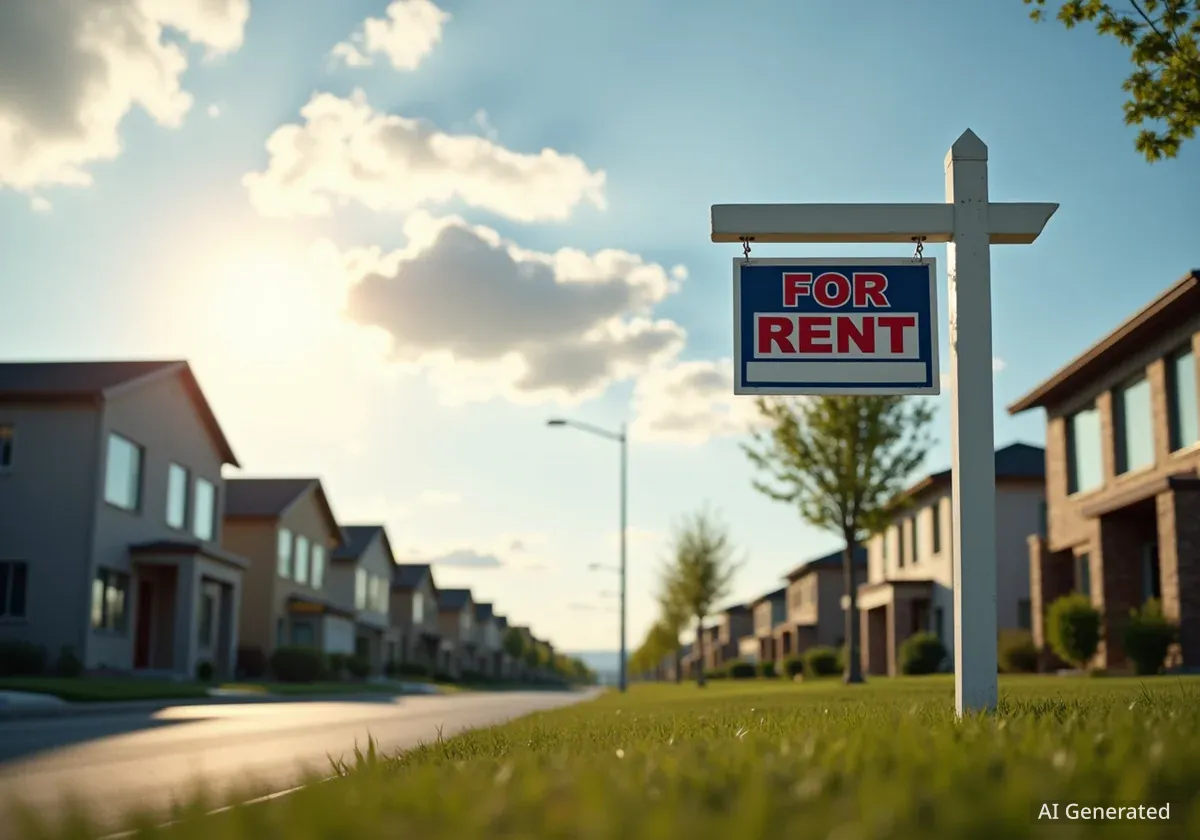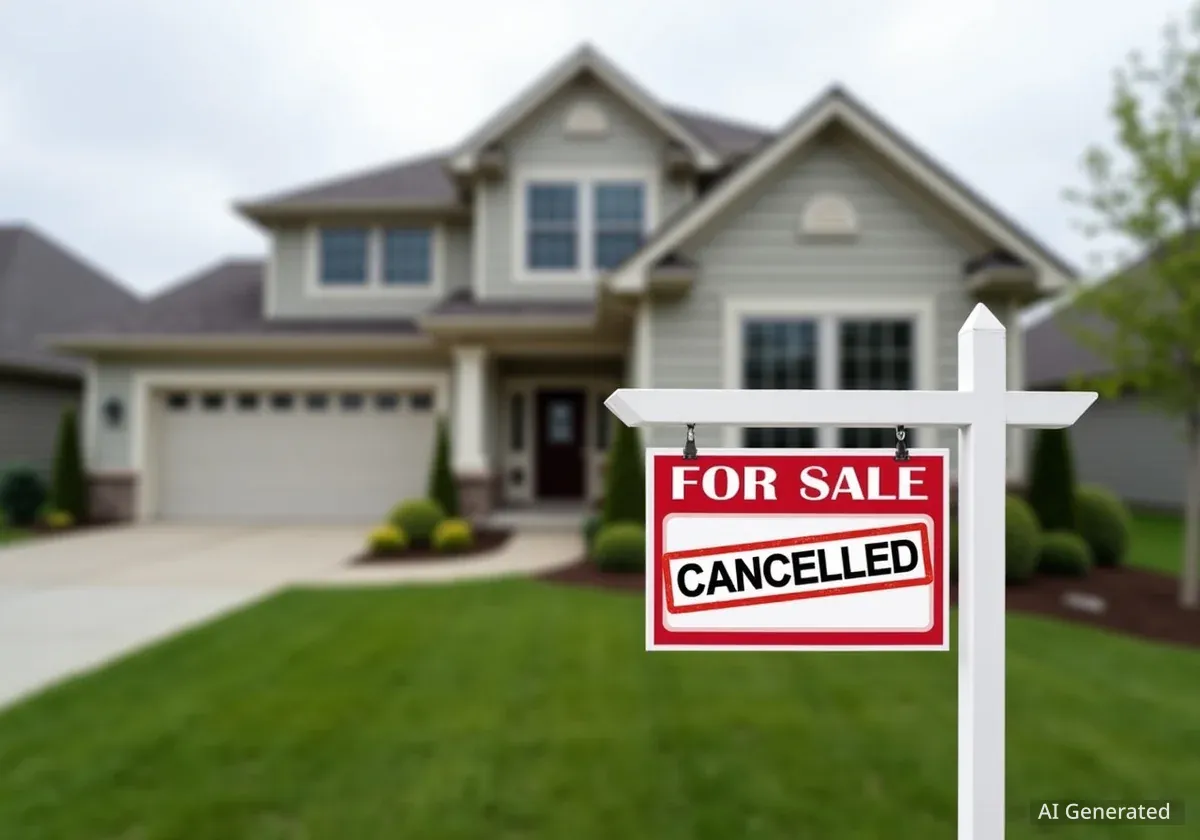The United States housing market is currently presenting a complex and often contradictory picture for renters, buyers, and builders. While rental prices have started to decrease in some major metropolitan areas, they remain significantly elevated compared to pre-pandemic levels. Simultaneously, the construction industry is expressing cautious optimism, hoping that falling mortgage rates will reinvigorate a sluggish home sales market, all while the nation watches for potential interest rate cuts by the Federal Reserve.
Key Takeaways
- Rental prices are softening in several key U.S. cities, offering some relief to tenants.
- Despite recent dips, the national average for asking rents is substantially higher than it was before 2020.
- Builder confidence, while currently low, is buoyed by the prospect of declining mortgage rates attracting more homebuyers.
- A potential interest rate cut by the Federal Reserve is viewed as a key factor that could stimulate home sales activity in the coming months.
The Dual Nature of the US Rental Market
For millions of American renters, recent data offers a mix of hope and frustration. In a handful of major urban centers, the relentless climb in rental costs has finally begun to reverse course. This softening provides a welcome break for tenants in those specific locations.
However, this localized relief does not reflect the broader national trend. Across the country, the average asking rent remains at a level that would have been unimaginable just a few years ago. The significant price hikes seen during the pandemic have established a new, higher baseline for housing costs.
By the Numbers: Rent Inflation
According to market analysis, while some cities have seen single-digit percentage drops in rent year-over-year, the national median rent is still over 20% higher than it was four years ago. This illustrates the long-term affordability challenge facing many households.
Why Prices Remain High
Several factors contribute to the persistently high cost of renting. A fundamental shortage of housing supply in many regions means that demand continues to outpace the number of available units. Even with new construction, the market has not yet caught up to the needs of a growing population.
Furthermore, elevated interest rates have made homeownership less attainable for many, pushing potential buyers back into the rental market and increasing competition for available apartments and homes.
Builder Confidence and the Path Forward
The sentiment among homebuilders reflects the market's uncertainty. The National Association of Home Builders (NAHB) reported that builder confidence remained low in September, hampered by high financing costs and persistent supply chain issues for materials.
Despite the current challenges, many in the construction industry see a potential turning point on the horizon. The primary source of this optimism is the recent decline in mortgage rates from their recent peaks.
Understanding the NAHB Index
The NAHB/Wells Fargo Housing Market Index (HMI) is a monthly survey of NAHB members. A reading below 50 indicates that more builders view conditions as poor than good. The index serves as a key barometer for the health of the single-family housing market.
The Critical Role of Mortgage Rates
Mortgage rates are a decisive factor for most potential homebuyers. When rates are high, they can add hundreds or even thousands of dollars to a monthly mortgage payment, pricing many buyers out of the market entirely. Builders are betting that as rates continue to ease, sidelined buyers will re-enter the market.
Industry analysts believe that sustained lower borrowing costs are essential to "revive sales activity" that has been suppressed for much of the year.
This renewed demand would not only boost home sales but also provide the confidence builders need to ramp up new construction projects, which could help address the nation's long-term housing shortage.
The Federal Reserve's Influence on Housing
All eyes are on the Federal Reserve as its decisions on monetary policy have a direct and powerful effect on the housing market. A potential cut in the federal funds rate is widely anticipated to be the catalyst that could significantly jumpstart home sales.
Lowering the benchmark rate typically leads to lower mortgage rates, making home loans more affordable for a larger pool of applicants. This is the outcome that both buyers and builders are eagerly awaiting.
A Counterbalancing Economic Factor
However, the situation is not entirely straightforward. A potential complication is the state of the job market. Reports indicating a weaker labor market could initially temper enthusiasm for homebuying. Concerns about job security often lead consumers to delay major financial commitments like purchasing a house.
Therefore, while a Fed rate cut is expected to be a positive driver for housing, its immediate impact might be muted if economic uncertainty persists. The market's revival may depend on both lower rates and a stable employment outlook.
What This Means for Consumers
The current market requires careful navigation for both renters and prospective buyers. The landscape is shifting, and conditions can vary significantly from one city to another.
Advice for Renters
For those currently renting, the market dynamics suggest several strategies:
- Research Local Trends: Pay close attention to your specific metropolitan area. If you live in a market where prices are softening, you may have more negotiating power when your lease is up for renewal.
- Consider Longer Leases: If you find a rental at a price you are comfortable with, locking it in with a longer lease could protect you from future price hikes.
- Monitor Affordability: Keep an eye on the rent-to-income ratio in your area to understand the broader affordability context.
Guidance for Potential Homebuyers
Aspiring homeowners face a different set of variables. The key is to be prepared but patient.
Falling mortgage rates are a positive sign, but it is crucial to act based on personal financial readiness, not just market speculation. Securing a pre-approval for a mortgage can help you understand your budget and act quickly when the right property becomes available.
Ultimately, the U.S. housing sector is at a crossroads. The interplay between rental market adjustments, builder sentiment, and Federal Reserve policy will shape the landscape for months to come. While uncertainty remains, the potential for lower interest rates offers a significant ray of hope for a more balanced and accessible market.





